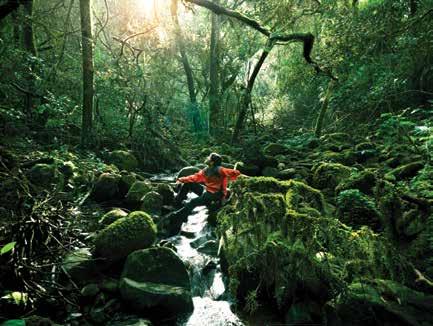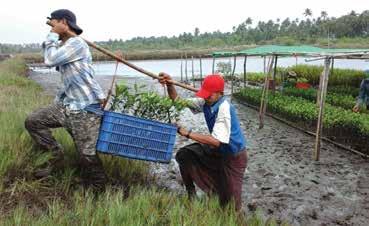
3 minute read
Travel
with Kate Springer
Before the pandemic, many Hong Kong residents (myself included!) took every opportunity to travel. A quick weekend in Hoi An here, a wedding in the US there... But all those trips really add up when it comes to our personal carbon footprints.
Advertisement
Every passenger on a roundtrip flight from Hong Kong to London will emit roughly 2,890 kg of carbon dioxide, the most dangerous climate-warming greenhouse gas. To put that into perspective: the average person emits 4,800 kg per year.
When travel eventually picks back up again, taking a train, metro, coach bus or electric car will almost always be more environmentally friendly than your average flight or cruise. However, here in Hong Kong, that would limit us to visiting China and Macau, so it is unlikely we will all forgo air travel altogether.
If a few flights a year are non-negotiable post-COVID, consider investing in carbon offsets - you can purchase them one-off, subscribe to a monthly plan, or even gift them to friends and family. While far from a free pass to fly non-stop, they can help to counterbalance carbon emissions from travel. Here’s a primer on how they work:
WELL


WHAT ARE CARBON OFFSETS? When you purchase carbon offsets, you are investing in environmental, community or scientific programmes that promise to reduce emissions elsewhere in the world - ostensibly rendering your flight “carbon neutral”. Usually, offset providers partner with NGOs and local communities, using your dollars to fund things like wind farms, reforestation, biomass power plants, energy efficiency initiatives or wider environmental agendas, like biodiversity conservation.
“Fundamentally, carbon offsets are trading schemes, which can take many forms,” says Jane Madden, the global managing partner of sustainability and social impact at Finn Partners consultancy firm. “Often the money goes to projects such as tree planting, biofuels or clean [energy-efficient] stoves. However, they are also traded on exchanges.”


Most programmes offer emissions calculators to help assess how much carbon you need to offset. Depending on the site, offsets may cost around US$16 (HK$125) to compensate for a long-haul flight or US$4 (HK$30) for a regional flight.
ANY RED FLAGS? Offsets might seem like a win-win on a surface level, but there are a few factors to consider before making a purchase. In the past, carbon offset programmes have come under fire due to a lack of transparency and little oversight - plus it is also hard to measure each project’s effectiveness.
Critics also argue that carbon offsets distract from the big-picture problem, implying that travellers and businesses can continue to indulge with a “clean” conscience, and potentially delay carbon reduction solutions within the industry. WHAT SHOULD I LOOK FOR? Seek out organisations that outline any administration fees upfront, clearly explain how your offsets will be used, and have been accredited by trusted third-party agencies such as The Gold Standard, Climate Action Reserve, Voluntary Gold Standard, Green-e, or Verra (also known as Voluntary Carbon Standard).
“There are a variety of offsets programs. Choose carefully,” adds Madden. “Look for offset programs that are local to your origin or destination, partner with a respected environmental NGO, support the development of biofuels or other ways to decarbonise the aviation industry, and that partner with airports which have the most traffic.”
WHICH PROGRAMMES HAVE THE BEST TRACK RECORDS? A few reputable options include Cool Effect, Terrapass and Carbonfund, which all clearly explain their environmental initiatives - from tree-planting to renewable energy development, water restoration, carbon capture at landfills, and sustainable rice farming - and account for every dollar spent.
“Carbon offsets are not a turn-key solution to aviation emissions nor are they a get-out-of-jail-free card,” reminds Madden, who uses a personal carbon budget to manage her own emissions. “The easiest way to decrease emissions is not to produce them in the first place.”
TRAVEL GREENER
Weighing your options? Here’s how various modes of transport stack up, based on grams of C02 emitted per person, per kilometre*.
Foot: 0 Bicycle: 0 Commuter Ferry: 18 Bus: 28-170 Train: 49-160 Cars: 43-183 ROPAX Ferry**: 385 Flights: 150-400
*Varies based on size, fuel source, seat occupancy and engine type. **ROPAX refers to roll-on, roll-off ferries that transport both freight and passengers. Sources: Carbon Independent, CO2nnect










